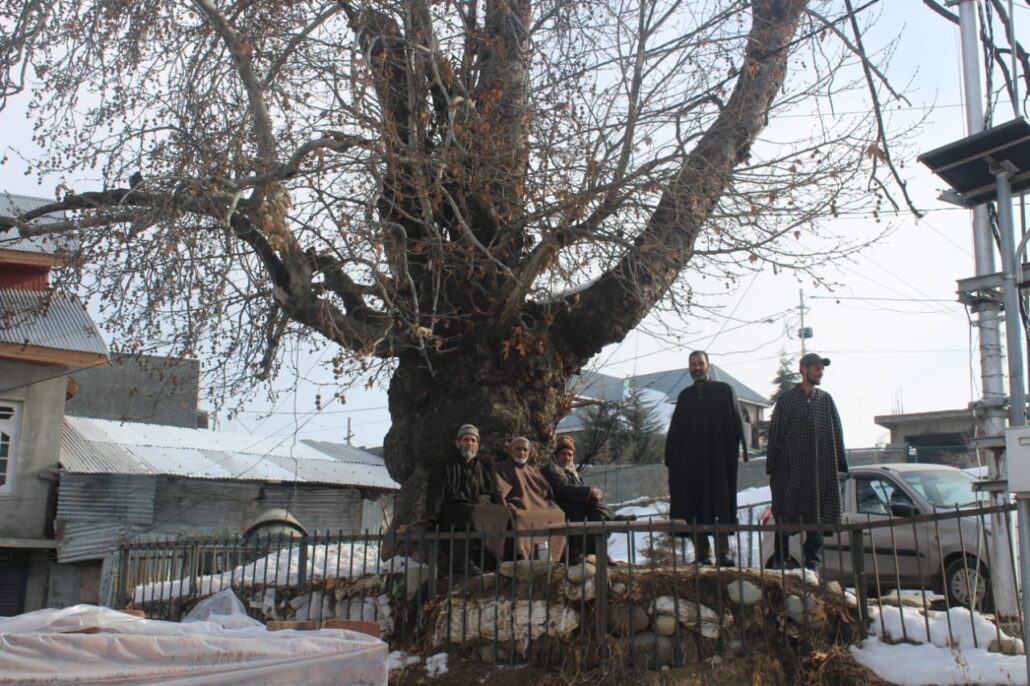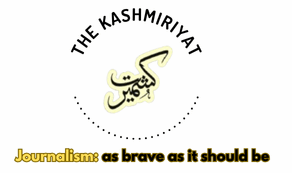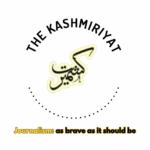
Sameer Ahmed Najar
Kashmir, often described as the “Paradise on Earth,” is known not only for its breathtaking landscapes but also for its rich cultural and linguistic heritage. At the heart of this cultural legacy lies the Kashmiri language (کٲشُر) — a language spoken by millions yet increasingly neglected, particularly by the younger generation.
Kashmiri, despite its deep historical roots, seems to be slowly slipping into oblivion.
The decline of Kashmiri, like many languages, hasn’t happened overnight. It has eroded gradually, influenced by societal, political, and economic pressures.
Perhaps one of the most significant factors in this decline has been the exclusion of Kashmiri from mainstream education.
Until recently, Kashmiri was not a compulsory subject in schools, depriving students of the opportunity to learn their mother tongue formally. English and Urdu continue to dominate Kashmir’s educational institutions, reinforcing the notion that Kashmiri is not a “language of the future.”
This idea has also taken root in many homes. Parents fearing for their children’s careers often discourage them from speaking Kashmiri at home, prioritizing English or Urdu instead.
According to a 2023 report by the Jammu Kashmir Board of School Education (JKBOSE), less than 10% of students in Kashmir opt for Kashmiri as a subject beyond primary school.
Compounding this issue is the social stigma surrounding the language. In many parts of Kashmir, speaking Kashmiri is wrongly associated with some sort of backwardness. Many urban families, particularly in Srinagar and other cities, believe that speaking English or Urdu signifies higher social status and modernity. Thus, many young Kashmiris now can understand the language but struggle to speak it fluently.
Conversations at home and in public spaces among the younger generations are shifting toward Urdu or English, making Kashmiri invisible in their daily interactions. A 2021 study by the University of Kashmir found that over 60 per cent of Kashmiri youth prefer speaking Urdu over Kashmiri, even in informal settings.
This decline has been further amplified due to the impact of globalization and digital media. The younger generation is deeply immersed in social media, online gaming, and global pop culture, which primarily operate in English and Hindi.
Kashmiri content on digital platforms is limited, making it less accessible and appealing to young audiences.
With Netflix, YouTube, and Instagram shaping communication and entertainment, Kashmiri is struggling to find its place in the digital age. Influenced by these global trends, parents are also choosing to raise their children in an English-speaking environment.
Why Saving Kashmiri Matters
A language is more than just words; it is a repository of history, culture, and emotions. Losing Kashmiri would mean losing a unique way of expressing thoughts, traditions, and heritage that has existed for centuries.
As linguist David Crystal puts it: “When a language dies, a way of thinking about the world dies with it.”
Kashmiri has a rich literary tradition, shaped by legendary poets like Lal Ded, Sheikh-ul-Alam, and Mahjoor, whose works define the region’s spiritual and cultural landscape.
Losing Kashmiri would mean depriving the future generations of their literary and spiritual roots. It would render literary treasures, deeply intertwined with the region’s identity, such as Kashmiri Sufi poetry, inaccessible to them.
The shared cultural, political, aspirarional and social identity of Kashmiris — Kashmiriyat—depends largely on the survival of the language. Scholars argue that the concept of Kashmiriyat and the identity does not revolve around one language, as the region has diversified languages ranging from the little spoken Balti to Pahari. A Kashmiri-speaking generation is one that retains a sense of belonging to its homeland.
The decline of Kashmiri certainly is not irreversible. Languages can be revived if people are willing to take action.
Hebrew, once considered a “dead language,” was successfully revived in Israel through dedicated policy changes and mass education.
Welsh in the UK saw a resurgence after government-backed language promotion efforts.
The revival of the Kashmiri language has to start with our education system. The government should make Kashmiri a mandatory subject in schools, at least up to the 10th grade. Textbooks should be modernized and made more engaging to encourage students to develop an interest in the language.
Schools and universities should host Kashmiri-language debates, poetry competitions, and cultural festivals, fostering an appreciation of Kashmiri literary tradition among students.
To connect with younger audiences, there needs to be an increase in Kashmiri-language content on digital platforms. We need more online content dedicated to Kashmiri storytelling, education, and entertainment.
Podcasts in Kashmiri discussing history, poetry, and contemporary issues could be a great way to engage younger audiences. A lot of efforts are being made in this regard in the digital spaces. In addition, Kashmiri could be made accessible globally through online language courses.
Local media, including Doordarshan Kashmir and Radio Kashmir, should dedicate more time to Kashmiri-language programming.
Efforts should also be made to produce, promote, and support the production of Kashmiri-language movies and documentaries.
While these are initiatives that the government and individuals can make on a broader scale, change has to come from within the family and community.
We need to encourage Kashmiri conversations at home. Parents must make a conscious effort to speak in Kashmiri with their children rather than switching to Urdu or English.




